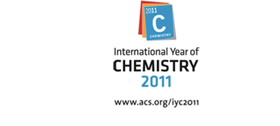FOR IMMEDIATE RELEASE | January 04, 2011
Environmental Science & Technology special issue on environmental policy now online
WASHINGTON, Jan. 4, 2011 — A special edition of the American Chemical Society journal, Environmental Science & Technology (ES&T), one of the world’s premier environmental journals, is available now for a limited time online without charge. The special edition will be accessible free during 2011, when the world celebrates the International Year of Chemistry.
Entitled “Environmental Policy: Past, Present, and Future,” the special issue of ES&T recognizes closure of a “green” decade in which people became more aware of environmental issues, and society marked the 40th anniversaries of Earth Day, the Clean Air Act, the Clean Water Act and the U.S. Environmental Protection Agency.
Topics range from the mysterious disorder decimating honey bee colonies to ways to choose and manage energy sustainably. Those marked “Feature” are written in a less technical style and suitable for general readers, including students and non-scientists.
In addition to scientific research articles and features, the issue will include articles on policy analysis and critical reviews on environmental science and engineering. It will also review the history and directions of environmental policies.
“This special ES&T issue also addresses the invited themes of chemical risk assessment, energy and the environment, water quality and quantity, biodiversity, information management and global poverty,” said Jerald Schnoor, Ph.D., editor-in-chief of ES&T. “Readers can also examine the origins of the world’s environmental issues and how scientists are investigating, prioritizing, and addressing concerns.”
The following articles are in the special edition:
- Environmentalism Then and Now: From Fears to Opportunities, 1970−2010 (Feature)
- Multilateral Environmental Agreements for Wastes and Chemicals: 40 Years of Global Negotiations (Feature)
- Dioxins: An Overview and History (Feature)
- A Rich Vein? Mining and the Pursuit of Sustainability (Feature)
- Examining India’s Groundwater Quality Management (Feature)
- The Plight of the Bees (Feature)
- Environmental Scientists, Biologically Active Compounds, and Sustainability: The Vital Role for Small-Scale Science (Feature)
- Tracking Toxicants: Toward a Life Cycle Aware Risk Assessment (Feature)
- Are Oral Contraceptives a Significant Contributor to the Estrogenicity of Drinking Water?
- Constructed Wetlands for Wastewater Treatment: Five Decades of Experience
- Toward Meaningful End Points of Biodiversity in Life Cycle Assessment
- European Experience in Chemicals Management: Integrating Science into Policy
- Life Cycle Assessment: Past, Present, and Future
- Toward a Consistent Evaluative Framework for POP Risk Characterization
- From Chemical Risk Assessment to Environmental Quality Management: The Challenge for Soil Protection
- A Framework for Evaluating the Contribution of Transformation Products to Chemical Persistence in the Environment
- Evaluation of Factors Affecting Stakeholder Risk Perception of Contaminated Sediment Disposal in Oslo Harbor
- Uncertainty Analysis of Life Cycle Greenhouse Gas Emissions from Petroleum-Based Fuels and Impacts on Low Carbon Fuel Policies
- Policy Implications of Uncertainty in Modeled Life-Cycle Greenhouse Gas Emissions of Biofuels
- Deployment Models for Commercialized Carbon Capture and Storage
- On-Road Vehicle Emission Control in Beijing: Past, Present, and Future
- What’s Next after 40 Years of Drinking Water Regulations?
- Emergency Drinking Water Treatment during Source Water Pollution Accidents in China: Origin Analysis, Framework and Technologies
- Why Metrics Matter: Evaluating Policy Choices for Reactive Nitrogen in the Chesapeake Bay Watershed
- Nitrate in United Kingdom Rivers: Policy and Its Outcomes Since 1970
- Patterns of Iron Use in Societal Evolution
- Likelihood of Achieving Air Quality Targets under Model Uncertainties
- Bioaccumulation of Organic Contaminants in Humans: A Multimedia Perspective and the Importance of Biotransformation
- The Missing Piece: Sediment Records in Remote Mountain Lakes Confirm Glaciers Being Secondary Sources of Persistent Organic Pollutants
- Modeling Phototransformation Reactions in Surface Water Bodies: 2,4-Dichloro-6-Nitrophenol As a Case Study
- Mesoscale Carbon Sequestration Site Screening and CCS Infrastructure Analysis
- Variation of Riverine Material Loads and Environmental Consequences on the Changjiang (Yangtze) Estuary in Recent Decades (1955−2008)
Trend Reversal of Nitrate in Danish Groundwater — a Reflection of Agricultural Practices and Nitrogen Surpluses since 1950
###
Media Contact
Michael Bernstein
202-872-6042
m_bernstein@acs.org
Michael Woods
202-872-6293
m_woods@acs.org


